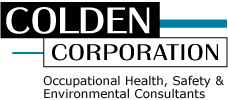The shape of the modern workplace has changed—today’s office can be anywhere from one’s home, in a coffee shop, or at a client’s site. Despite these challenges, developing a positive working environment can be achieved through communicating the value of ergonomics, and increasing awareness of the existing and potential work-related injuries to employees.
NIOSH defines ergonomics as the science of fitting workplace conditions and job demands to the capabilities of the working population. Essentially, the goals of ergonomics are to design the workplace to match people’s capabilities, so they can lead healthy and productive lives. When ergonomics is implemented correctly, human performance is optimized, and the risk of work-related injuries is lowered.
Work-related musculoskeletal disorders (MSDs) are injuries of the muscles, nerves, tendons, ligaments, joints, cartilage, or spinal discs attributed to the work environment and performance of work. Proper office ergonomics such as correct chair height, good posture, and equipment spacing are a few factors that can help avoid job hassles, soreness, and potential injury.
The University of Iowa Ergonomics Program published a list of 10 office ergonomic tips to help avoid fatigue:
- If possible, make sure that the weight of your arms is supported at all times if performing prolonged keying.
- Watch your head position and try to keep the weight of your head directly above its base of support (neck).
- Don’t be a slouch! Slouching puts more pressure on the discs and vertebrae of your back. Use the lumbar support of your chair and avoid sitting in a way that places body weight more on one side than on the other. Move your chair as close to your work as possible to avoid leaning and reaching. Make sure to “scoot” your chair in every time you sit down.
- The monitor should be placed directly in front of you, with the top no higher than eye level. The keyboard should be directly in front of the monitor, so you don’t have to frequently turn your head and neck.
- Talking on the phone with the phone receiver pinched between the neck and ear puts strain on both your neck and shoulder muscles; don’t do it!
- The keyboard and the mouse should be close enough to prevent excessive reaching which strains the shoulders and arms.
- Avoid eye strain by making sure that your monitor is not too close, it should be at least an arm’s length away.
- Take steps to control screen glare, and make sure that the monitor is not placed in front of a window or a bright background.
- You can rest your eyes periodically for several seconds by looking at objects at a distance to give your eyes a break.
- Your feet should not be dangling when you are seated. If your feet don’t comfortably reach the floor or there is pressure on the backs of your legs, use a footrest or lower the keyboard and chair.
An efficient and safe work environment for office employees can be achieved through prevention and education programs, ergonomic risk assessments and consultations and implementing simple control measures like those listed above.
References:
- Center for Disease Control and Prevention. “Elements of Ergonomics Programs.” Accessed October 4, 2018. https://www.cdc.gov/niosh/topics/ergonomics/ergoprimer/default.html
- United States Department of Labor. “Ergonomics.” Accessed October 4, 2018. https://www.osha.gov/SLTC/ergonomics/index.html
- The University of Iowa Environmental Health and Safety. “Office Ergonomic Tips.” Accessed October 4, 2018. https://ehs.research.uiowa.edu/safetymatters-office-ergonomic-tips

